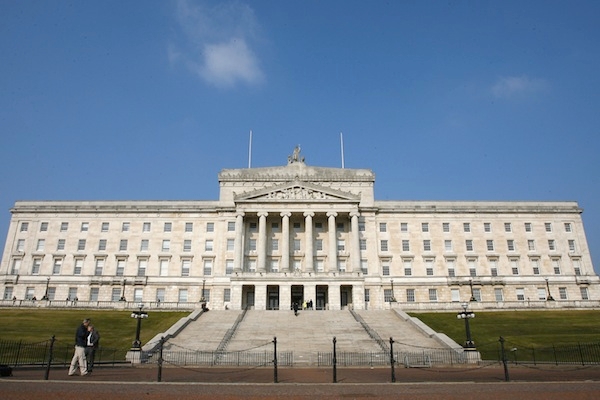Those of us who only pronounce the words auld lang syne on New Year’s Eve and have a vague grasp of their grammatical function may be cheered by a sign at Ballyhalbert in Co. Down that reads: ‘Shore Road, formerly — lang syne, Tay Pot Raa.’ So we are learning quickly. Lang syne means ‘formerly’, and the local words for ‘tea pot’ are tay pot, and for ‘road’, raa. Hence Faas Raa.
But what language is this? The Good Friday Agreement of 1998 declared that ‘part of the cultural wealth of the island of Ireland’ was Ulster-Scots. This is undeniable. In 2001, the United Kingdom recognised ‘Scots and Ulster Scots’ as ‘a regional or minority language’. By then, paid translators had been engaged to turn the proceedings of the Northern Ireland Assembly into Ulster-Scots.
It is undoubtedly a language, but is it a different language from English? I think not. We are not talking about the Celtic languages of Gaelic or of Irish here. Ulster-Scots is derived from the language of people who spoke Scots in Scotland, and this lowland Scots, sometimes called Lallans, is, linguistically speaking, a northern dialect of English. Culturally, it boasted a proud literature, such as Bishop Gavin Douglas’s translation of the Aeneid (which he called Eneados), beginning: ‘The batalis and the man I wil discrive.’ The written literature of Ulster-Scots is less distinguished.
In Northern Ireland perhaps 2 per cent of people speak Ulster-Scots, say 35,000. In case they do not understand ‘Toilet’, an arts centre in Omagh has a notice pointing to the ‘Cludgies’. The way to the print workshop is signed ‘Prent Waarkschap’, which looks like Afrikaans and might have puzzled Bishop Douglas.
A useful booklet for teachers tells them that the Ulster-Scots for ‘house’ is hoose and for ‘education’ is learnin. That’ll learn them. To see how officials use Ulster-Scots, here is a sentence from a Northern Ireland Assembly leaflet, Yer Assemblie: ‘Syne 2007, Assemblie comatees is haean forgaithers wi hunners o fowk an thinkan on a wheen differan maiters as haes an effect tae the fowk o Norlin Airlan.’
Don’t get me wrong. I rejoice in the plurality of languages and dialects. But heaven help a child educated in the medium of Ulster-Scots.






Comments